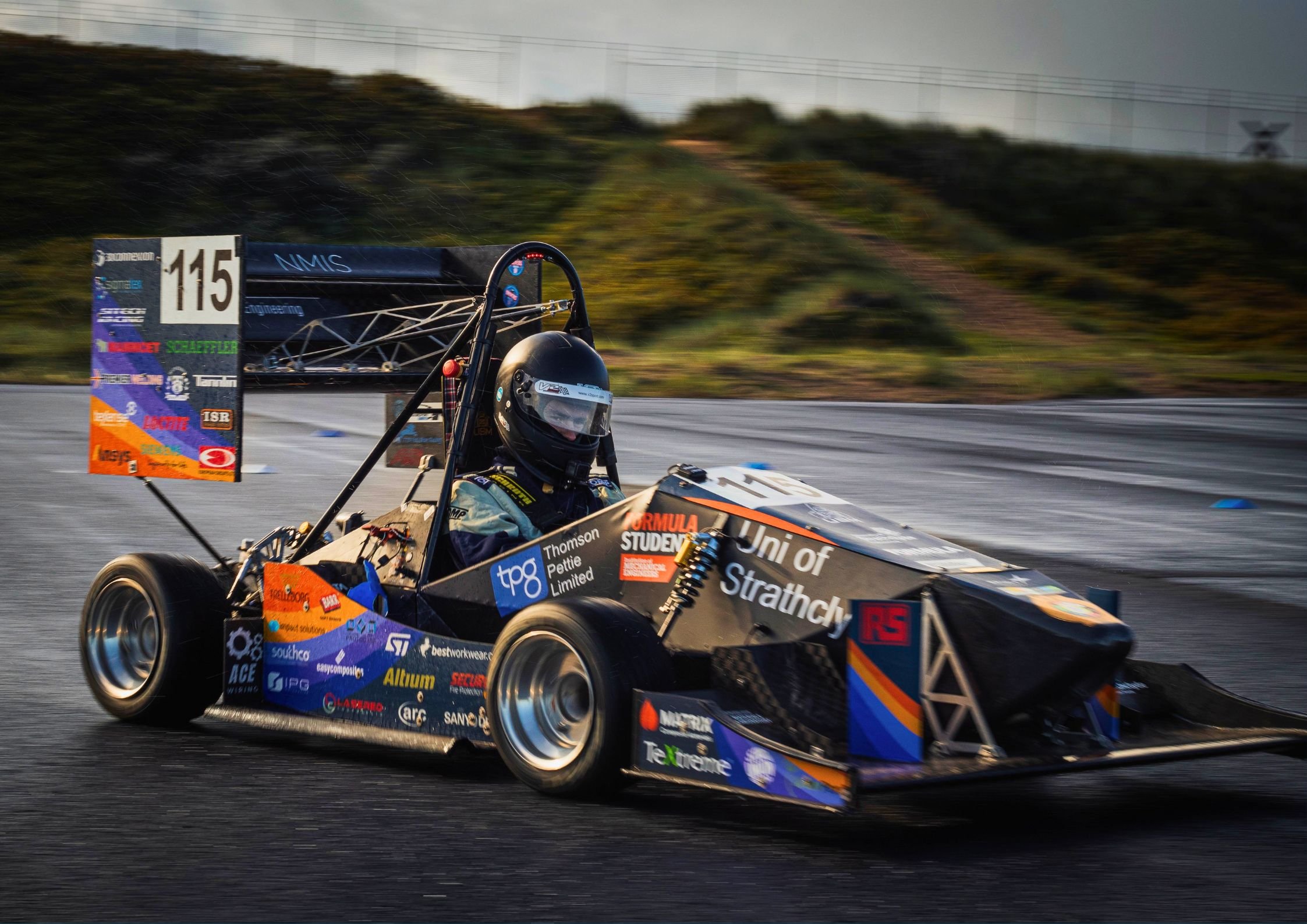How AeroStrip Helped Validate Aerodynamic Performance in Formula Student Vehicle - Simulation to Real World Data
For Max Stancliffe, a penultimate-year Electrical & Mechanical Engineering student at the University of Strathclyde, with a long-standing passion for motorsport, theoretical results were never going to be enough. Driven by curiosity, he set out to explore whether aerodynamic simulations truly reflect what happens in reality. As part of his MEng degree, Max aimed to understand how well his CFD models matched up against real airflow behaviour on the rear wing of a Formula Student electric race car — and whether the data could reveal differences that might shape smarter design decisions.
In collaboration with PPS and the University of Strathclyde Motorsport (USM) team, Max put the AeroStrip pressure sensor strips to the test - gathering detailed data and transforming his student research into a professional success story that’s now shaping product development at PPS.
Who Is USM?
The University of Strathclyde Motorsport team (USM) is a well-established and respected participant in the Formula Student community, with over 20 years of continuous involvement. Focused on designing and building competitive, electric-powered single-seater race cars, USM competes annually at Formula Student UK held at Silverstone Circuit, as well as at international events across Europe including Formula Student Germany and the Netherlands. In recent years, they have achieved notable success, including a 12th place overall finish and 4th in the electric vehicle category at FSUK 2023, and their first design finals appearance in three years.
The Challenge: Comparing Simulation and Reality
Max’s goal was clear: determine how closely computer-based aerodynamic simulation reflects real-world results. USM’s CFD models, developed in STAR-CCM+ using several turbulence models, offered valuable theoretical insights. But Max wanted to go a step further — validating them with physical pressure data captured directly from a rear wing under simulated track conditions.
Although the testing took place in a controlled wind tunnel, the wing was mounted on a custom aluminium and steel rig. While the bracket itself was somewhat disruptive to the airflow, it was necessary for conducting the tests. To minimise additional interference, it was designed to attach to pre-existing fixings on the wing surface. The same bracket was also replicated in the CFD simulations to prevent any inconsistencies between the physical and virtual models.
The Solution: AeroStrip in Wind Tunnel Testing
With support from PPS, Max used four AeroStrip sensors - two on the upper surface and two on the lower surface of the main rear wing element. These flexible, capacitive strips featured 20 mm and 8 mm pitch elements, allowing Max to visualise pressure distribution across the wing surface while balancing broad mapping with high-resolution detection of localised air flow changes.
The tests were conducted at wind speeds of 10 m/s and 15 m/s, providing comparative data across different flow regimes. Max’s objective: capture pressure contours, detect flow separation, and compare measured values to CFD simulation results.
The Results: Data That Drove Real Change
✔️ Simulation vs Reality
Using the k-ω SST turbulence model, Max’s results showed general agreement between CFD and measured data, but with some important differences.
Simulated Downforce (15 m/s): 124.890 N
Measured Downforce: 95.073 N
✔️ Detected Flow Separation
On the lower surface, AeroStrip revealed a mid-chord pressure increase, indicating early flow separation — a key aerodynamic phenomenon not captured in the simulations. As airflow detached from the wing surface, velocity dropped and pressure rose, in line with Bernoulli’s principle, leading to a relative pressure reading close to 0 Pa. Meanwhile, 8 mm sensors positioned at the leading edge were used to analyse pressure peaks and better understand how the flow split between the upper and lower surfaces of the wing. This highlighted the added value of real pressure data in refining simulation accuracy.
✔️ Uncovered Surface Pressure Variation
Approx 2.1% variation on the top surface
Approx 13.4% variation on the bottom surface
These variations reflected asymmetries, structural deflection, and real-world inconsistencies not modelled in the CFD.
✔️ Informed Design Improvements
Thanks to the AeroStrip data, USM began redesigning the rear wing’s end plates and adjusting the angle of attack to improve downforce and aerodynamic efficiency – all based on observed, measurable airflow patterns.
Beyond the Classroom: Max’s Future with PPS
“I wanted to understand the real differences between simulation and physical results - and AeroStrip helped me do just that. The data was clear, reliable, and actionable.” — Max Stancliffe, University of Strathclyde
Max’s work impressed the PPS team so much that he will be joining as an engineering intern in Summer 2025, supporting the continued development of AeroStrip - specifically focusing on its usability in the field and during live racetrack testing.
What’s Next: From Lab to Track
Following the success of this wind tunnel validation, PPS is working on an on-car version of AeroStrip - eliminating external hardware and enabling live data collection on moving vehicles. This will allow engineers to observe airflow and analyze aerodynamic performance in real on track race conditions.
New opportunities are already emerging, including potential collaboration with other teams such as TU Graz Racing, to further validate the sensor’s role in aerodynamic design development.
Max’s Full Study Available
Max’s complete research report, detailing the full experimental setup, aerodynamic simulation comparisons, and pressure plots, is available for download. It provides further insight into external aerodynamics, flow behaviour, and the design process used to bridge simulation and real-world performance.
📄DOWNLOAD full study: Application of the Aerostrip for Aerodynamic Optimisation in Motorsport
Conclusion
This project began as a student-led investigation and ended as a professional collaboration - proving that AeroStrip isn’t just a lab tool, but an efficient and practical solution for aerodynamic development. By enabling clear comparison between CFD models and physical data, AeroStrip empowered Max, USM, and PPS to make design decisions grounded in reality - and set the stage for on-track innovation.



